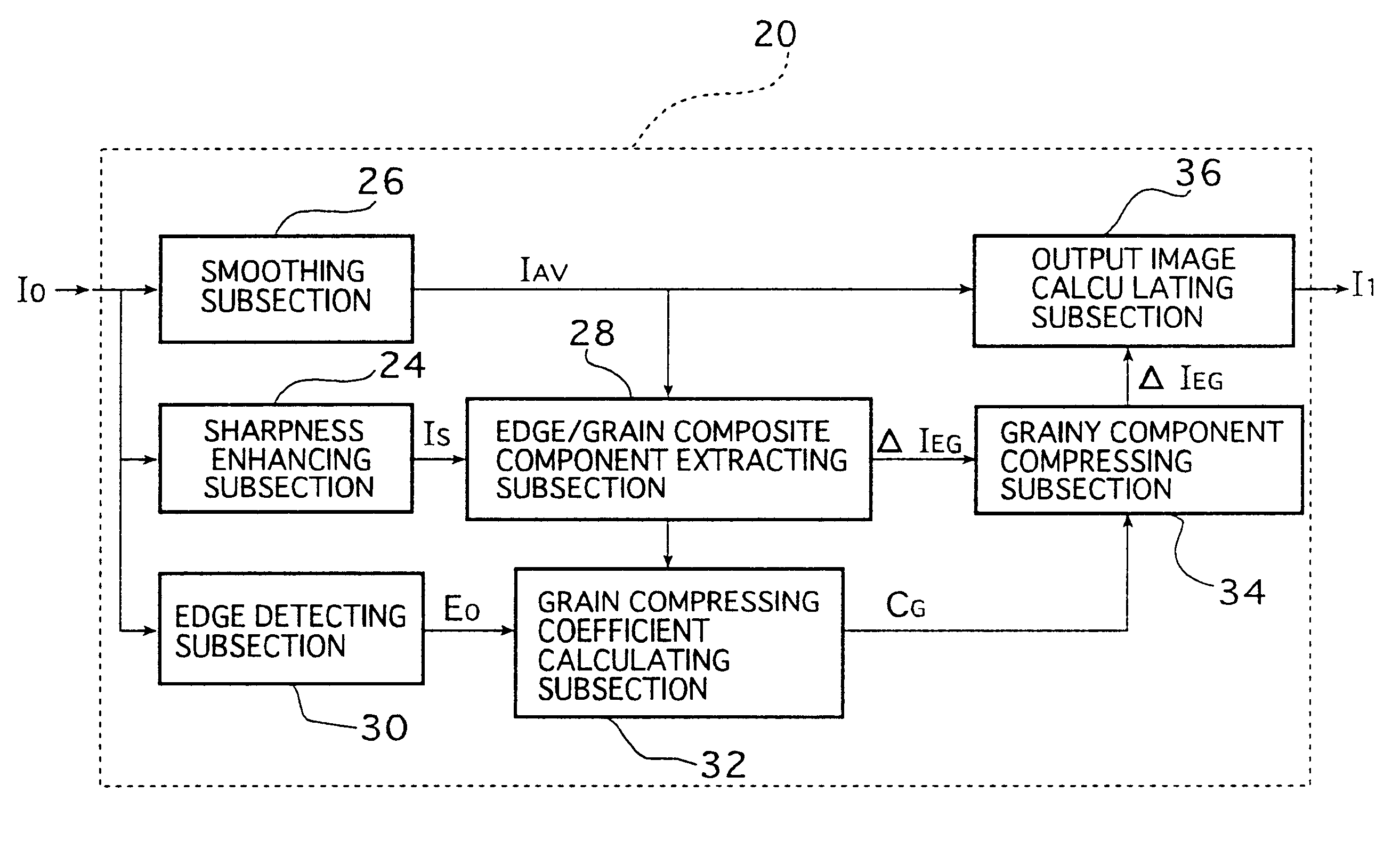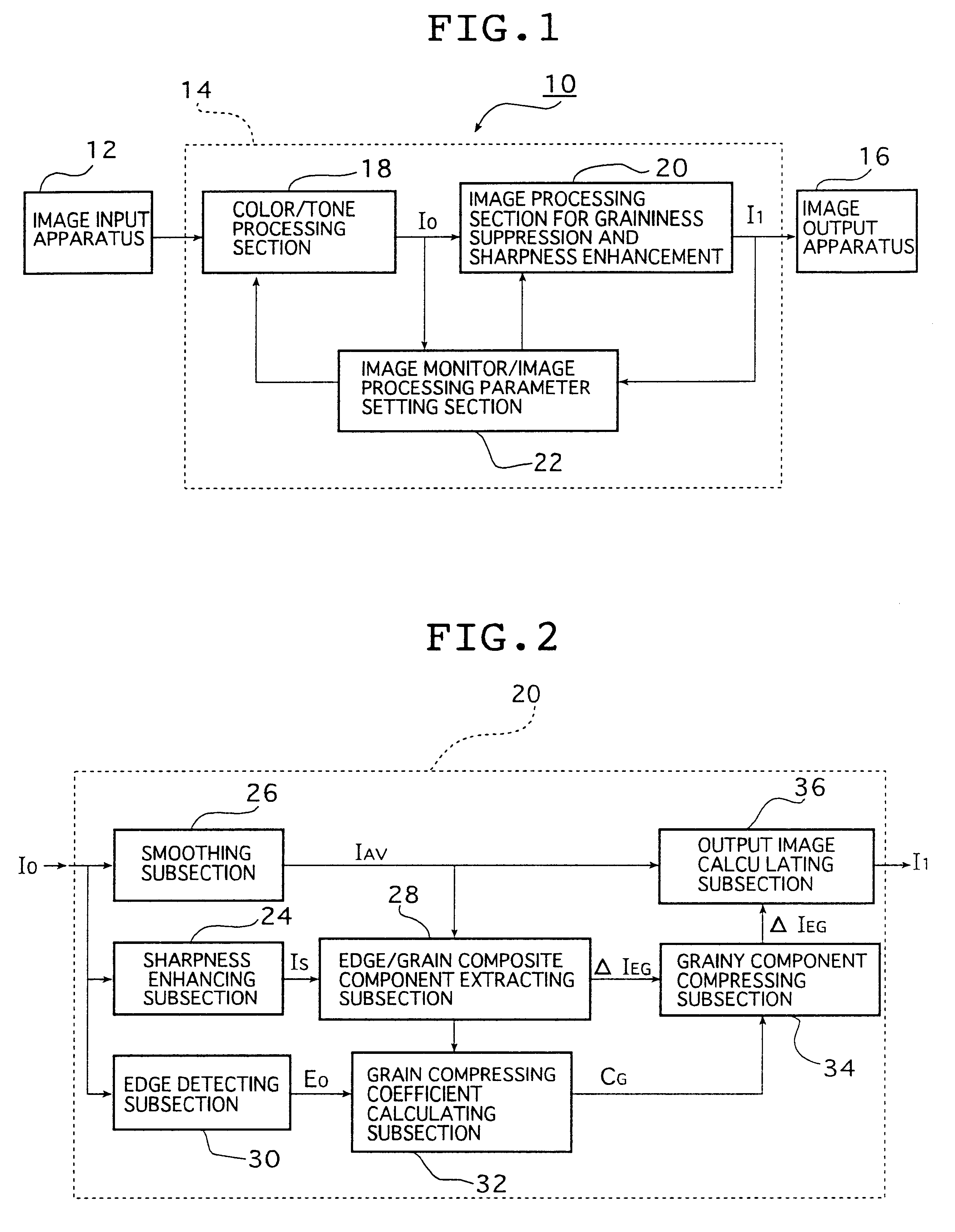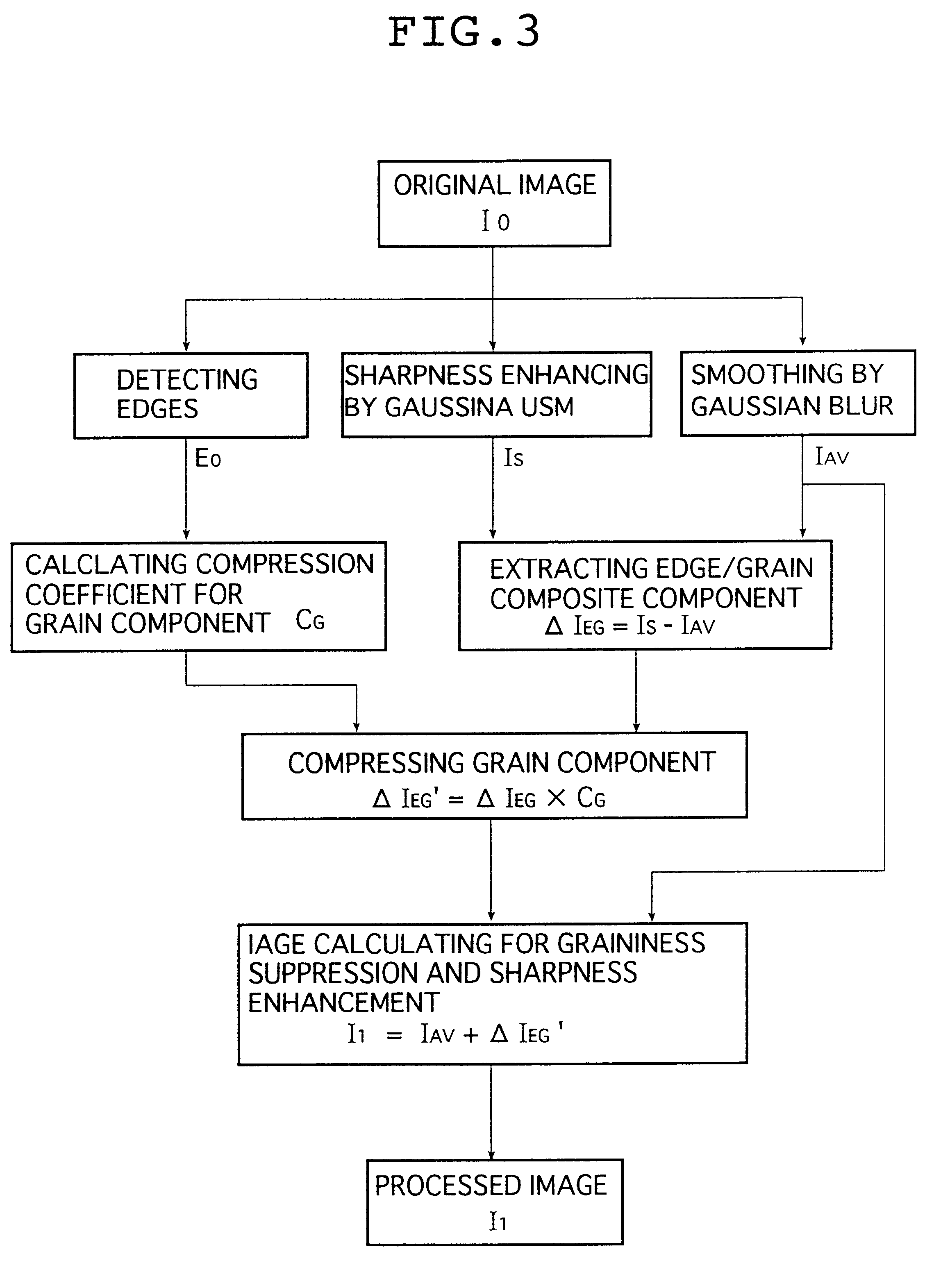Method and apparatus for image processing
a digital image and noise suppression technology, applied in image enhancement, image analysis, instruments, etc., can solve the problems of difficult to obtain image quality better than the original grainy picture, the blurred grainy pattern is not pleasing to the eye, and the sharpness of the output image is considered deteriorated
- Summary
- Abstract
- Description
- Claims
- Application Information
AI Technical Summary
Benefits of technology
Problems solved by technology
Method used
Image
Examples
Embodiment Construction
A photographic image recorded on a 35-mm color negative film FUJICOLOR SUPER G ACE 400 (product of Fuji Photo Film Co., Ltd.) was read with a scanner SCANNER & IMAGE PROCESSOR SP-1000 (product of Fuji Photo Film Co., Ltd.; pixel number, 2760.times.1840) and converted into a digital image of 8 bits for each of R, G and B colors. This original image was processed by the method of the invention using the image processing apparatus 14 shown in FIG. 1 according to the flowchart shown in FIG. 3.
The process of sharpness enhancement was performed by Gaussian unsharp masking according to equation (8) using the following 3.times.3 unsharp mask:
-0.50 -0.82 -0.50
-0.82 6.27 -0.82
-0.50 -0.82 -0.50
The smoothing process consisted of multiplication by a normal distribution function to effect averaging. The processing mask was one of 9.times.9 pixels expressed by equation (16) which was used in such a way that the sum of the values of all pixels would be 1.0. The result was the same as would be attai...
PUM
 Login to View More
Login to View More Abstract
Description
Claims
Application Information
 Login to View More
Login to View More - R&D
- Intellectual Property
- Life Sciences
- Materials
- Tech Scout
- Unparalleled Data Quality
- Higher Quality Content
- 60% Fewer Hallucinations
Browse by: Latest US Patents, China's latest patents, Technical Efficacy Thesaurus, Application Domain, Technology Topic, Popular Technical Reports.
© 2025 PatSnap. All rights reserved.Legal|Privacy policy|Modern Slavery Act Transparency Statement|Sitemap|About US| Contact US: help@patsnap.com



